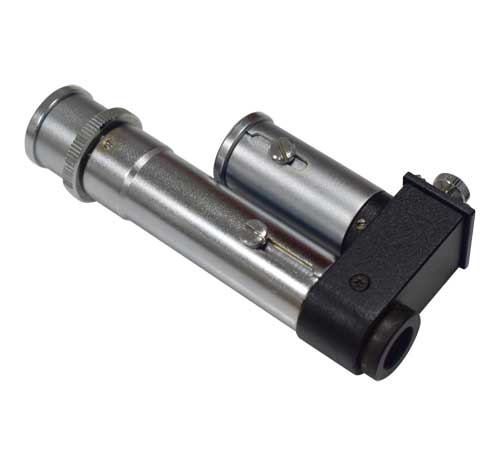It is a simple device for the rapid examination of the spectral composition of light sources, radiant bodies, etc.
We have two versions of the direct vision spectroscope:
- RDV-1- A complete and lightweight direct vision spectroscope, without the wavelength scale, for observing visible radiations from 400-750mm.
It consists of a metal tube.
A draw out tube with an eyepiece is mounted at one end of the metal tube.
The other end of the metal tube has an adjustable slit, for controlling the amount of light, so as to obtain a sharply defined spectrum.
The draw tube can be slid along its length, and is fitted with a multi-element prism, causing appreciable dispersion of light without deviation.
The apparatus is supplied complete in a velvet case.
Wooden case is also available on request.
It is also useful for the flame test of basic radicals (sodium, potassium, strontium, copper, etc.).
There is a single eyepiece and an independent focusing tube for the graticule, which carries an index at 590nm, with 'D' marked right below the scale, (corresponding to the wavelength of sodium light), and can be calibrated to a known light source by adjustment of the knurled screw.
The amount of light admitted to the spectroscope can be regulated by a variable slit adjusted by a knurled ring round the rating tube.
The apparatus is supplied complete in a velvet case.
Wooden case is also available on request.
Therefore with the direct vision spectroscope, both sodium 'D' lines are independently resolved and the Fraunhofer lines are visible.
